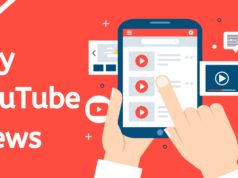
Running a successful blog is no easy feat. Even when you’re passionate about your work and can pen several blog posts per month, you’ll always have to look at your metrics and find ways to improve. If you aren’t a natural marketer, deciding how to grow after you start a blog isn’t a walk in the park.
And yet, without a blog, you risk falling behind your competition. Studies have shown that websites with a blog are much more likely to be indexed by Google and 97% more likely to get inbound links. As you can see, a blog is a great way to secure additional traffic. Here are a few tips to help you continue to grow your traffic and build your brand:
Start Guest Blogging
Guest blogging is a great way to improve your blog traffic. And as an added bonus, it’s also great for improving your SEO, too. Find relevant blogs in your industry and pitch your guest post as an expert in your field. The blogs you choose will make or break your ability to score inbound links and additional visitors; always research to see how much traffic a particular site is getting to ensure you’re getting the most value for your written work.
Use website review tools to determine a site’s rank, as well as their monthly traffic. On the same token, as a newbie to guest blogging, writing, or entrepreneurship, you should stay away from major publications with readership in the millions. While these publications are certainly worth pitching later down the line. However, if you’re more realistic about pursuits, you’ll have a higher chance of scoring authporships. Many bloggers have benefited greatly from the power of guest blogging, and you can, too.
Think About Viral Content
Viral content is content that spreads rapidly through the Web. Of course, everyone would love to create viral content, but it’s easier said than done. If you’re on a mission to create viral content and help boost your traffic, one of the first things you’ll want to do is pay attention to websites that are consistently producing viral content. You’ll notice that the most popular content captures the reader with a bit of storytelling and mystery.
Headlines are, of course, one of the most important elements of captivating viral content. Content that’s likely to go viral evokes emotion in the reader, whether it’s sadness or happiness or humor. Incorporating an element of surprise is another element often found in viral content—especially when it comes to imagery. Easy-to-read content with visual aids go a long way. Interactive content—like this viral career quiz on BuzzFeed—also helps aid your goals towards viral content.
Rework Your Headlines
Headlines can mean the difference between a click and a missed opportunity. They’re key for content marketers, and you should think twice before typing a few words in your Title area. On average, 8 out of 10 people will read headline copy, but only 2 out of those will go on to read the rest. And while there’s no magic formula for writing great headlines, there are some tips you can follow to ensure success.
In a study that analyzed the most clicked titles on Facebook, the most popular clickable phrase was “will make you.” Emotional phrases also drove interactions. This included phrases like “tears of joy” or “shocked to see.” Take a look at some of the most popular blogs in your industry and pay attention to those headlines, taking note of what works and what drives people to those pages.
Improve User Experience
Improving your blog traffic count isn’t just about creating great content. Your readers need to also have a great on-page experience. That means your site speed needs to be up to par (consider transferring your domain if your site speed is lower than normal and/or you have difficulty getting good service from your web host), your website should be mobile responsive, and your navigation menus should be intuitive. Your layouts should be clutter-free, with plenty of blank space to let the eyes settle in and avoid overwhelming the visitor.
Create Evergreen Content
Evergreen content refers to content that can sustain itself regardless of the time of year. For example, DIY posts are evergreen, because they remain relevant at all times. No matter when a user is reading a DIY post, it presents useful, quality content on how to do something. You can score more readers by creating evergreen content that stays helpful time and time again. This type of long-lasting will continue to bring in traffic year after year.
When it comes to developing evergreen content, you should put more thought and work into it than a typical blog post. Become the definitive source on the topic you’re writing about. One of the best ways to do this to craft unique copy that’s pertinent to you. For example, describing the ups and downs you’ve experienced while running a blog is a great way to attract readers with an engaging, personal story that no one else has. You can also interview other people about their stories, too. Your topic should be narrow—easy enough for readers to grasp.








